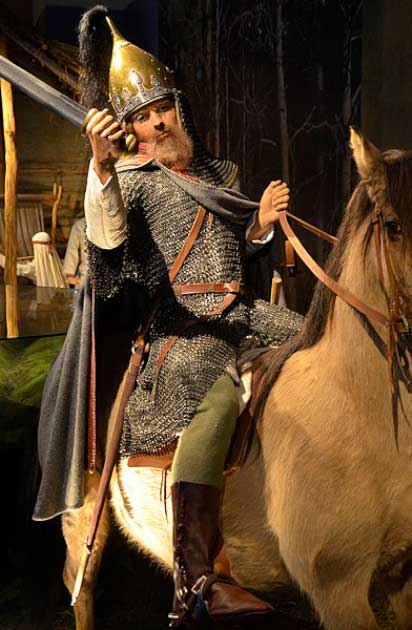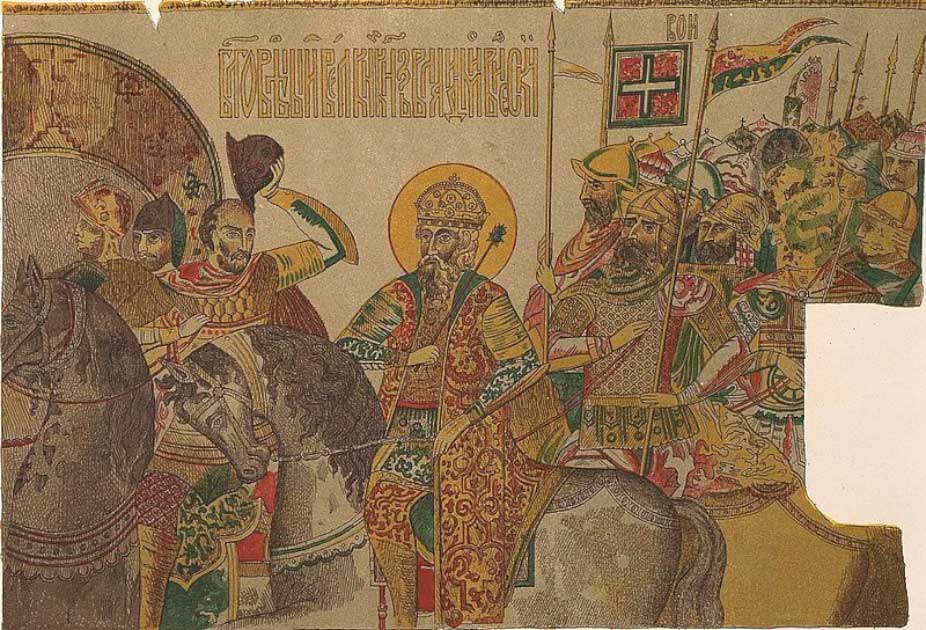Medieval Europe was a melting pot of cultures, perhaps the most concentrated and varied in history. The Norman conquest of England in 1066 overlapped with Viking raids of northern Europe, the golden age of the Muslim expansion into Spain and further, and the venerable Byzantines, still the power in Europe, grappling with the upstart Bulgarian empire.
These competing civilizations are just the highlights of a seething mass of interconnected cultures. Here raiders could become emperors, slaves could become gods, and kings could be murdered on dusty plains far from their homes. Here anything was possible.
In search of the defining characteristics of the time, there is little of permanence and it seems that the very instability of the continent and its African and eastern neighbors was what made Europe. Only Byzantium, the surviving rump of the old Romans who were the last to bring lasting order and stability to the continent, remained seemingly inviable.
But in truth Byzantium was changing too. The interwoven tapestry of Europe saw the old capital find new friends and allies, playing the game of realpolitik to remain sovereign. So it was that the old city came to ally with Vikings, and a bunch of hairy raiders found themselves in the imperial palace.
This is the story of the Varangians.
Who were the Varangians?
The Varangians were not born into power: they had to win it. Starting as a loose-knit group of Viking traders, raiders, settlers and warriors they occupied the regions including current-day Ukraine, Russia and Belarus.
They showed immense courage and determination in battles and wars. Legend has it that the Varangians were known for their reckless rage, and they were never afraid to lose their life or shed their blood.

The members of the Varangians demonstrated authentic passion and zeal. Some writers who have investigated the life of warriors have identified them as “axe-bearing barbarians” and they were known for their intimidating size and strength, and their martial prowess.
- Sviatoslav of the Grand Kievan Rus: another Alexander the Great?
- The Secret of Greek Fire: A Dark Age Flamethrower?
It was not just this fearsome reputation and ruthless loyalty of the Varangians helped transform the elite group of warriors into the personal bodyguards of Byzantine rulers. When it came to their responsibilities relating to their bodyguard activities, they were immensely loyal to the throne.
To the Byzantine emperors, used to political infighting and distrustful of their Greek bodyguards, this loyalty was priceless. Win the Varangians and you could rule without fear.
From Scandinavia with Murderous Intent
The Varangians originated from Scandinavia. They mainly belong to the nations such as Norway, Denmark and Sweden. The warrior group was mentioned for the first time in 859 in the Russian Primary Chronicle, a Slavic record of eastern European dynasties
According to both near contemporary and later records, during the later ninth and the tenth century, members of the Varangian tribe shifted their attention to the Baltic regions. Attacking their southern neighbors, these people were able to explore new places and expand their presence in different parts of Europe.
The people moved from the northern regions using their boats and established themselves in the Baltic states known in the modern day as Latvia, Estonia and Lithuania. Their savagery in attack and expertise as warriors helped them to continue their expansion and influence the creation of the modern Eastern and Central European regions.
And while they carved themselves out a territory and a new homeland, the Varangians maintained a reputation as a people who were constantly on the move. Their relentless expansion threw eastern Europe into disarray as they established themselves in what came to be called the Kievan Rus.
At that time the Varangians were considered the best warriors who existed in all of Europe. Unlike ordinary soldiers, the warriors were constantly either training or raiding, which helped them to polish their skills and prowess, which they used during wars and battles.
They were not only well-trained, but they were also highly courageous, which helped them to excel during crucial events relating to warfare. Apart from their exceptional fighting skills, they were fiercely loyal and faithful. The combination of these attributes could not be missed by the Byzantines: these dread enemies would make powerful allies.
But first they must be respected. Trade was established between the new Rus homeland and the eastern empire. The Varangian gains were respected and as the soldiers turned to farming their land the Varangians became part of the established order.
Untameable
Winning the support of the Varangians would not be easy however. At first they saw the Byzantine empire as just another enemy to be conquered: the Varangians had no need of alliances when they could take what they needed.

Varangian culture came from centuries of raiders and warriors. They would carve out their own land by the sword and honor their ancestors in doing so through battle. Treaties, negotiations, peace: these were the refuge of weaker men.
But it was this very aggression and emphasis on martial prowess which opened the door for the Byzantines. Flush with their victories and established in Europe, many of the warriors found that the farming life did not suit them. They preferred to keep going first as raiders and then as mercenaries.
These bands of soldiers formed from the Kievan Rus were not averse to accepting coin to fight. This would ultimately lead to fractures developing in their unified front, most notably in the seven Rus-Byzantine Wars.
These wars, in all honestly more annual campaigns, lasted from 860 to 1023, and were brief conflicts between the Rus and Byzantium for control of territory, trades routes, and strongholds. But, more and more, the Varangians came to fight for both sides, and as Byzantium emerged as the stronger of the two over more than a century’s fighting, the Varangians who fought for them came to be appreciated.
It was Emperor Basil II who formally created the Varangian Guard in 988, taking on 6,000 men sent to Byzantium for military assistance from Kyiv following a power struggle in the Rus’s capital city. more than a century of service to Byzantium. So it was that the Norseman, raiders and savage fighters, came to serve the Emperor as his finest warriors, a position that satisfied their honor.
The Varangians would serve the Byzantine emperors for four hundred years.
Top Image: The Varangian expansionism and love for fighting trained them to be formidable warriors. Source: Alexmina / Adobe Stock.
By Bipin Dimri